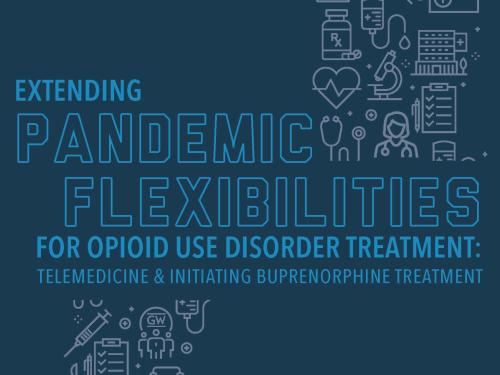Extending Pandemic Flexibilities for Opioid Use Disorder Treatment
This report is the first in a project supported by The Pew Charitable Trusts. Our second report was published in April 2021, and is available on our project landing page along with related content.
Executive Summary
Federal regulators dramatically reduced the barriers to using telemedicine to treat opioid use disorder in response to the COVID-19 public health emergency. Public health experts have long argued that health care practitioners can provide high-quality treatment for opioid use disorder via telemedicine. Until now, federal regulation has limited the ability of practitioners to prescribe buprenorphine, one of the medications considered the gold standard for treatment of opioid use disorder, using telemedicine.
Regulations limiting telemedicine, rooted in concerns about diversion of controlled substances, restrict practitioners from treating patients. This has particularly troublesome effects for patients located in geographic areas facing a shortage of practitioners because it further restricts the available pool of practitioners. The Drug Enforcement Administration (DEA) stated that after the COVID-19 public health emergency, telemedicine will return to the way it was before the emergency because the law requires it. Practitioners and public health experts are concerned that this would erode access to treatment. Congress could certainly make this change permanent using legislation. Setting that possibility aside, this report provides an independent assessment of whether DEA and the Substance Abuse and Mental Health Services Administration (SAMHSA) have the legal authority to extend the flexibilities after the public health emergency ends.
This report concludes that DEA and SAMHSA have the legal authority to extend the flexibilities granted during the COVID-19 public health emergency without additional authorization from Congress. DEA and SAMHSA have the authority to jointly issue regulations allowing practitioners to prescribe buprenorphine without first conducting an in-person medical evaluation. As an alternative, DEA can use its authority to establish a special registration for telemedicine program while SAMHSA issues an associated policy. As another alternative, SAMHSA and DEA can use the opioid-specific public health emergency declaration to offer a longer term, but not permanent, option to extend these flexibilities.
View Related Content: Extending Pandemic Flexibilities for Opioid Use Disorder Treatment
View more content from The PEW Charitable Trusts








